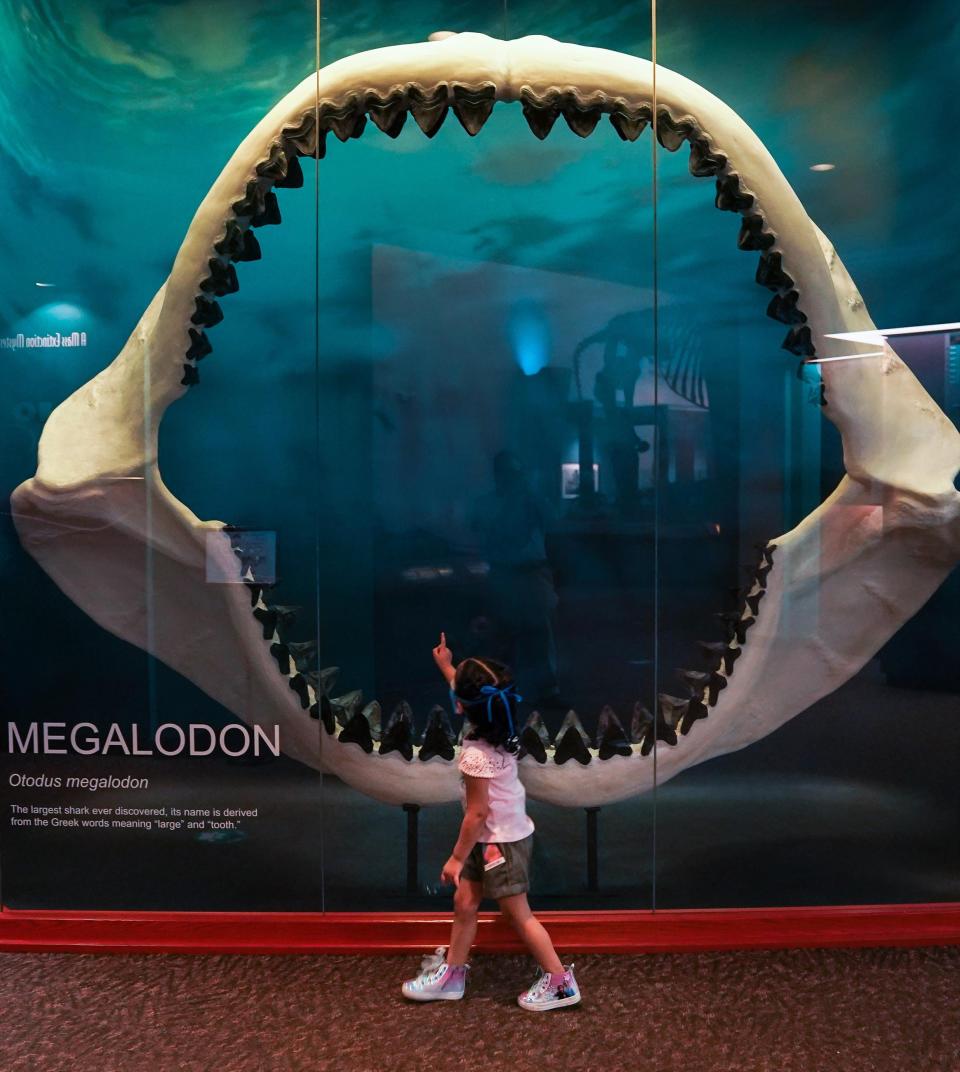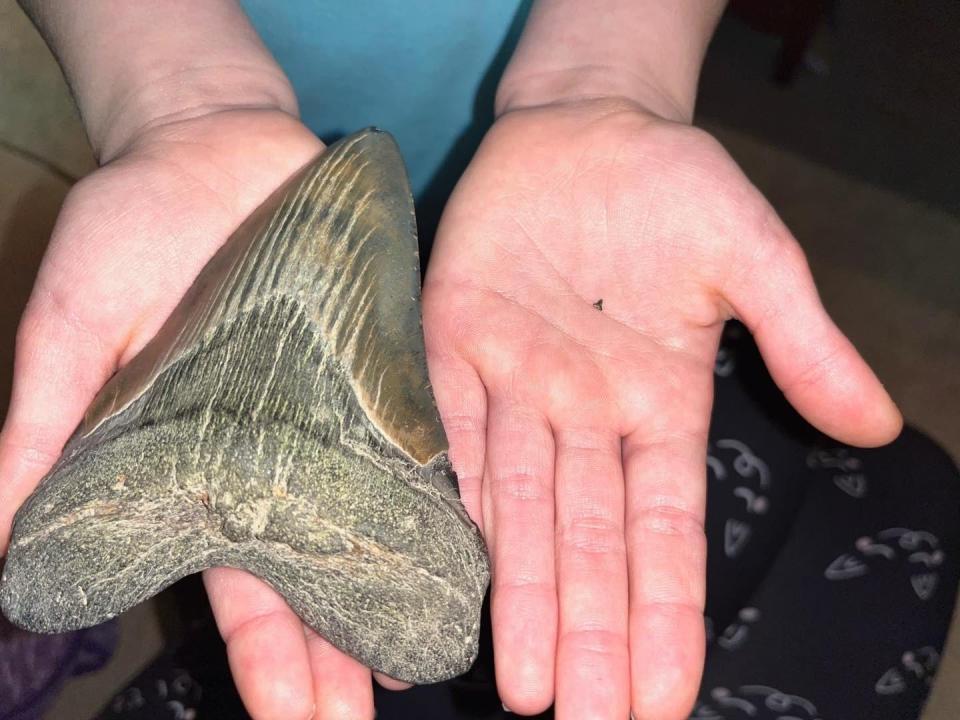National Megalodon Day is June 15. Here are 5 things to know about the prehistoric shark
The megalodon is a prehistoric ancestor of the modern-day shark, and just like it preceded the shark, National Megalodon Day precedes Shark Week. National Megalodon Day is June 15. The Discovery Channel's annual Shark Week begins a few weeks later on July 7.
So what exactly is a megalodon? It's a shark that lived millions of years ago in the oceans of the world. In the U.S., megalodon teeth have been found along parts of the West Coast and on the East Coast from the Carolinas to Florida.
The "big tooth" shark was about three times the size of a great white shark, judging by the size of its teeth, ranging between 50 feet and 60 feet or longer, according to the Natural History Museum in England. That's longer than a school bus.
About the only sign of the megalodon's existence is its teeth, since the sea creatures' skeletons were made of cartilage, much like sharks today.
Smithsonian Ocean says the megalodon weighed up to 120,000 pounds — that's about the same weight as 10 adult elephants.

National Megalodon Day: How do you celebrate a prehistoric shark?
Here are five things you may not know about megalodons in Mississippi:
Look for the big tooth
Megalodon means "big tooth," which emphasizes the one thing we know about the sea creature. Megalodon teeth as long as 7 inches have been found, while most are smaller, ranging between 3 inches and 5 inches. A great white shark's teeth typically are a little over 2 inches. Megalodon teeth have been found in parts of Mississippi, but it is unclear whether the massive shark ever lived in the Magnolia State, even when it was underwater. The best time to look for megalodon teeth is after a rainstorm, which loosens up the dirt and sand.
How many teeth did the megalodon have?

Megalodons had a mouth full of 276 teeth (think about how big those teeth are), and could go through a set of teeth every couple weeks, producing up to 40,000 teeth in a lifetime. Human adults have 32 teeth and none of them are 7 inches long. As the Big Bad Wolf told Little Red Riding Hood, "All the better to eat you with, my dear."
What did a megalodon eat?
A lot, would be one answer. The megalodon would have to eat a lot to sustain its weight. Being at the top of the food chain, that means it could eat a lot of whatever it wanted — whale, dolphin, big fish and even other sharks. Its jaws were big enough to fit two people side-by-side, so there would have been no coming back from a shark bite back in the megalodon days. National Geographic Kids reported that paleontologists estimate the megalodon needed to eat around 2,500 pounds of food a day — that's pretty much the same weight as 14 or 15 average-sized humans.
Mississippi was covered by water
Mississippi was covered by oceanic water in Precambrian times up to the Silurian period — about 126 million years, according to Mississippi State University's geological survey. That was millions of years before the earliest megalodons were believed to have existed. The mosasaur or sea dragon at one time lived in Mississippi waters, but that is for another story. The state was underwater in later years, including the Cretaceous period, but the by-then shallow waters had low levels of oxygen, making it difficult to sustain life.
Was there really a megalodon in Sardis Lake?
Much like the Loch Ness monster in Scotland, the megalodon of Sardis Lake is a mythical creature that came to life on the pages of the book, "Mississippi Megalodon," by Johnathan Rand. The book was published in 2008 as part of the American Chillers children's horror series. The book follows the adventures of three kids in the north Mississippi lake who go off on a small boat to go fishing and instead encounter the larger-than-life sea creature.
Do you have a story to share? Contact Lici Beveridge at lbeveridge@gannett.com. Follow her on X @licibev or Facebook at facebook.com/licibeveridge.
This article originally appeared on Hattiesburg American: Did megalodons ever live in Mississippi

